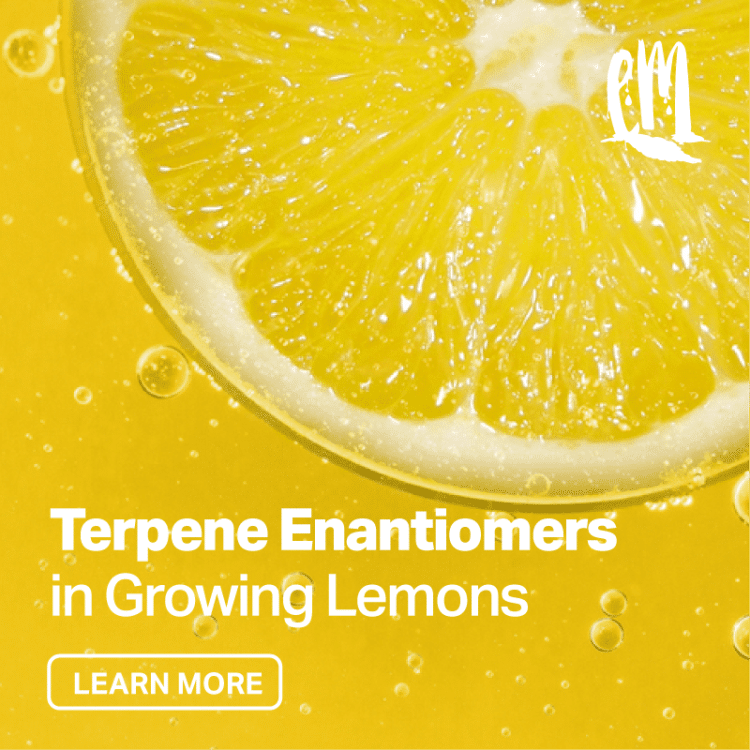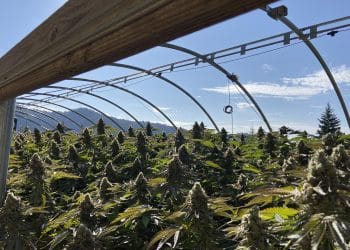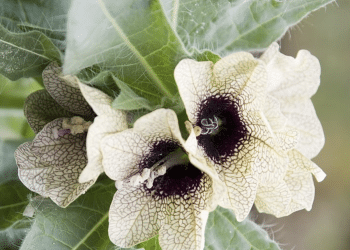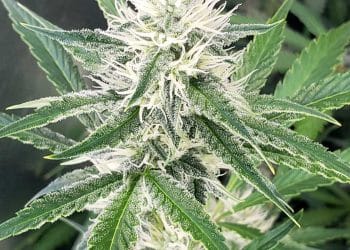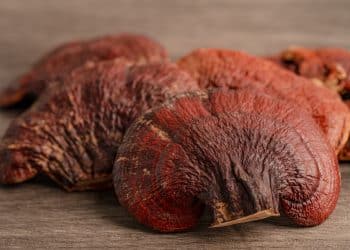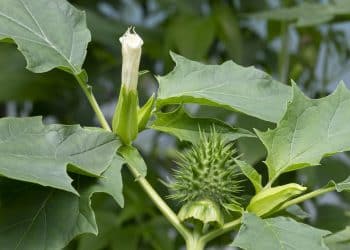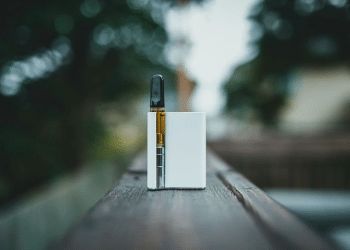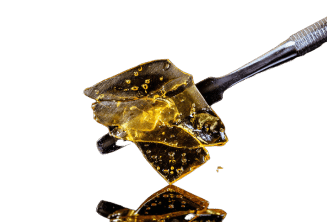When life hands you lemons, why not study them and research the life cycle of a lemon enantiomeric ratio of terpenes compared to its growth? Well, researchers have done just that, and they’ve discovered some interesting findings regarding the relationship between these two factors. Over 80 lemons from Catalonia, Spain, were used for this study. The lemons were from one tree, collected at different times during stages I and II of their growth cycles.
The study [1] focused on measuring the enantiomeric ratio of four specific terpenes: α-pinene, β-pinene, linalool, and limonene. These terpenes were collected using two extraction methods. The first was simultaneous distillation–extraction at reduced pressure (V-SDE), and the other was solid-phase microextraction (SPME). The goal was to collect terpenes without racemization (mirror images); reducing the pressure in V-SDE offset potential problems with heating. Both extraction methods produced equal results in obtaining the target terpenes.
Life Cycle of a Lemon Once Extracted
Enantiomeric profiles were obtained by enantioselective multi-dimensional gas chromatography–mass spectrometry (enantio-MDGC-MS)”. They did this by using two GCs that were connected to an ion-trap mass spectrometer (ITMS). (1)
The first chromatographic system used a split/splitless 1079 injector and a flame-ionized detector, while the second varied by having a split/splitless 1177 injector and a liquid CO2 capillary cold trap. After going through either of these chromatographic systems, the terpenes were then recorded at 70 eV of ionization energy using the ITMS.
After conducting the experiments in triplicate and analyzing the data, the enantiomeric ratios of α-pinene, β-pinene, and limonene were all confirmed to be consistent through their growth cycles before reaching their ripening stage. Linalool (R-(−)-linalool), on the other hand, decreased from 98% to 60%, which “occurs naturally and spontaneously before beginning the maturation process.” The odor of linalool depends on its enantiomer, whether sweet and floral (S-(+)-linalool) or woody and lavender-like (R-(−)-linalool). This change could be possible because of linalool’s open structure.
The Final Word
Were two important takeaways from this research. First, the V-SDE extraction method proved to be a superior technique in extracting monoterpenes from lemons without changing the enantiomeric ratios when compared to SPME. The researchers explained that SPME (performed on entire fruit) only generated one sample at a time, a problem overcome by V-SDE (performed on scraped peels). The second was confirming that the enantiomeric ratio of linalool varies greatly depending on what stage of growth the lemon plant is in. These findings ultimately point to the importance of enantiomeric biosynthesis of terpenes, which can be used to verify authenticity of essential oils. [1]
Reference:
- Guadayol M, et al. Relationship between the terpene enantiomeric distribution and the growth cycle of lemon fruit and comparison of two extraction methods. Journal of Essential Oil Research. 2018;30(4):244-252. https://www.tandfonline.com/doi/abs/10.1080/10412905.2018.1435427. Times Cited: 4 (Semantic Scholar); Journal Impact Factor: n/a
